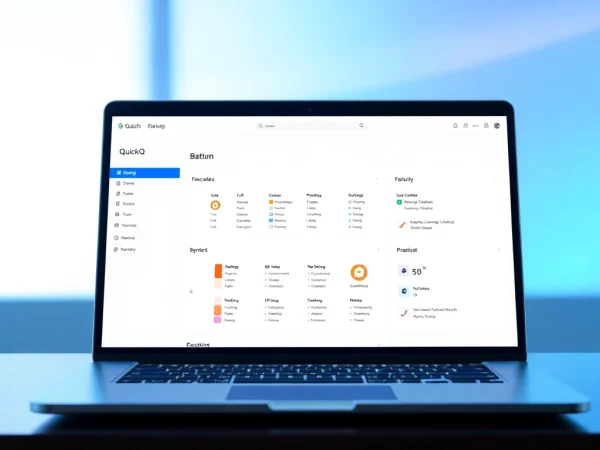Expert Strategies for Efficient Computer Repair and Maintenance
Understanding Computer Repair Fundamentals
What is computer repair?
Computer repair encompasses the processes and methodologies involved in fixing or maintaining computers and similar devices to ensure they function correctly. This can include a variety of tasks, from hardware repairs—like replacing faulty components—to software troubleshooting, where issues related to the operating system or applications are resolved. The scope of computer repair is broad, catering to individual users, businesses, and educational institutions, making it a crucial service in today’s technology-driven world.
Common issues encountered in computer repair
Computer users often encounter a range of issues that necessitate repair, creating the need for reliable computer repair services. Some of the most common problems include:
- Hardware Failures: This includes failed hard drives, malfunctioning motherboards, or defective power supplies.
- Software Glitches: Operating system errors, corrupted files, and application crashes can significantly impede usability.
- Virus and Malware Infections: Malicious software can compromise system security, leading to performance issues and data loss.
- Network Connectivity Problems: Issues such as slow internet speeds and inability to connect to networks can affect productivity.
Basic tools for effective computer repair
To navigate the complexities of computer repair, technicians rely on a set of essential tools, including:
- Screwdrivers: A set of precision screwdrivers is crucial for opening up computer cases and adjusting hardware components.
- Multimeters: These devices help measure voltage, current, and resistance, which is vital for diagnosing electrical issues.
- Diagnostic Software: Programs that can identify hardware and software issues quickly are invaluable in the repair process.
- Anti-virus Tools: Essential for detecting and removing harmful software from infected computers.
Steps to Diagnose Computer Problems
Identifying hardware failures in computer repair
Diagnosing hardware failures involves a step-by-step approach that can help technicians pinpoint issues efficiently. Key strategies include:
- Listen for Beep Codes: Many computers emit specific beep codes during boot failures, offering early clues about the failing component.
- Visual Inspection: Checking for physical damage, such as burnt smells, damaged connectors, or swollen capacitors, can identify clear issues.
- Substitution Testing: Replacing suspect hardware components with known good ones allows technicians to confirm whether a part is faulty.
- Advanced Testing Tools: Utilizing tools like POST (Power-On Self Test) cards can give deeper insights into motherboard malfunctions.
Software troubleshooting techniques
Software issues can manifest in numerous ways, making troubleshooting critical for restoring functionality. Effective techniques include:
- Safe Mode Booting: Starting the computer in Safe Mode limits the number of running processes, helping to isolate problematic software.
- System Restore: Reverting the system to a previous state can resolve recent issues caused by software installations or updates.
- Checking for Updates: Sometimes, simply updating the software or operating system can resolve performance problems or bugs.
- Uninstalling Applications: Removing recently added programs may help in identifying if they were the source of conflicts.
Using diagnostic tools effectively
Employing diagnostic tools correctly can streamline the identification of software and hardware problems. Key tools include:
- Disk Utility Programs: Tools like CHKDSK or other third-party software help detect and fix file system errors.
- System Monitoring Tools: Applications such as Resource Monitor provide insights into CPU, memory, and disk usage, helping to identify bottlenecks.
- Malware Scanners: Regularly running dedicated anti-malware tools ensures that any lurking threats are addressed promptly.
Preventive Maintenance Tips for Computer Owners
Regular software updates and their importance
Software updates play a crucial role in maintaining system integrity and performance. By regularly updating operating systems and applications, users can benefit from:
- Security Enhancements: Updates often patch vulnerabilities that could be exploited by malicious actors.
- Performance Improvements: New versions of software can improve speed and functionality, thus providing a better user experience.
- Bug Fixes: Updates often resolve known issues, allowing systems to operate without glitching or crashing.
Physical care and cleaning of devices
Keeping computers clean and physically well-maintained can prevent many issues from arising. Key tips include:
- Regular Dusting: Dust accumulation can lead to overheating; regularly clean the exterior and interior of computers.
- Adequate Ventilation: Ensure that devices are placed in well-ventilated areas to allow proper airflow.
- Use of Keyboard Covers: These can prevent dust and debris from penetrating keyboards, preserving their functionality.
Data backup strategies to avoid loss
Data loss can be devastating, making regular backups critical. Effective strategies include:
- Cloud Storage Solutions: Utilize services offering automatic and regular backups of essential files to protect against hardware failures.
- External Hard Drives: Regularly copy essential files to external drives, ensuring offline access in the event of a system failure.
- Backup Software: Employ dedicated backup tools to automate the process, allowing for scheduled backups without user intervention.
Choosing the Right Computer Repair Service
Evaluating the qualifications of a computer repair service
Choosing the right computer repair service is pivotal to ensure quality and reliability. Important criteria for evaluation include:
- Certifications: Look for technicians certified by recognized industry standards, indicating their competence and adherence to best practices.
- Experience: A firm with a long history in the industry is likely to have dealt with a wide range of issues, making them better equipped to solve problems.
- Specializations: Some services may specialize in particular types of repairs, so it’s helpful to choose one that aligns with your specific needs.
Transparent pricing in computer repair
Understanding pricing structures is essential when selecting a repair service. Key aspects include:
- Diagnostic Fees: Some services may charge for assessments; ensure you know whether this fee is waived upon proceeding with repairs.
- Itemized Quotes: Reliable services provide detailed quotes breaking down costs associated with parts and labor, preventing unexpected expenses.
- Warranty on Services: Look for guarantees on repairs, ensuring that issues arising post-service are addressed without additional charges.
Customer reviews and their impact on service choice
Customer feedback can significantly influence the decision-making process when selecting a computer repair service. Important factors to consider are:
- Rating Scores: Check online platforms for ratings and feedback, focusing on consistency rather than isolated reviews.
- Response to Complaints: Evaluate how the service resolves customer complaints; this can indicate their commitment to customer satisfaction.
- Word-of-Mouth Recommendations: Personal referrals often provide the most reliable insights into quality and service delivery.
Future Trends in Computer Repair
The role of artificial intelligence in computer repair
Artificial intelligence (AI) is rapidly transforming the landscape of computer repair, enabling services to operate more efficiently. This includes:
- Predictive Maintenance: AI analyzes usage data to predict potential hardware failures before they occur, allowing preventative repairs.
- Automated Diagnostics: Advanced algorithms can identify issues based on patterns and previous data, speeding up the troubleshooting process.
- Intelligent Support Systems: Chatbots and virtual assistants powered by AI can provide 24/7 support, helping users troubleshoot simple issues without human intervention.
Remote computer repair solutions
Remote repair services have gained popularity due to their accessibility and convenience. Key advantages include:
- Speed and Efficiency: Many issues can be resolved quickly without the need for physical service calls, reducing downtime for users.
- Cost-Effectiveness: Remote repairs often come with lower fees compared to in-person visits, as they save on travel and labor costs.
- Wider Reach: Users can access expert services from anywhere, making it easier to connect with qualified technicians.
Advanced tools and technologies shaping the industry
The computer repair industry is evolving, with technological advancements shaping practices and improving service delivery. Innovations include:
- Cloud-Based Tools: Repair services can store, share, and collaborate on diagnostic data in real time, accelerating repair processes.
- Virtual Reality Training: VR technology is used to train technicians, providing them with immersive learning experiences for hands-on skills.
- 3D Printing in Repairs: The ability to print replacement parts on demand is revolutionizing repair capabilities, enabling quick fixes for obsolete components.










